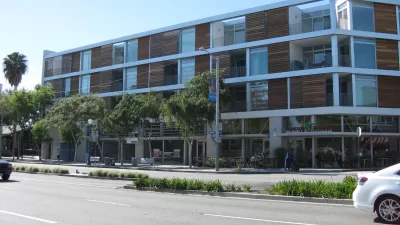Carole Turley Voulgaris guest blogs about a recent article in the Journal of Planning Education and Research.

Guest Blogger: Carole Turley Voulgaris of Cal Poly.
Although transportation planners have always taken an interest in adults' commutes to work, commutes by children and adolescents to school have been the purview of school boards and departments of education rather than transportation agencies. In pursuit of their primary mission of educating students, these entities may enact policies—such as school consolidation and school choice—that have the potential to increase the amount of time that some students must spend traveling to school.
There may be real educational benefits to some of these policies, but what is the cost to those students whose commutes to school might be much longer as a result? With a limited number of hours available in the day, what activities must students sacrifice to make time for these longer commutes?
In our recent article in the Journal of Planning Education and Research, we use data from the American Time Use Survey, to look at how 2,707 adolescents spent their time on a school day between 2003 and 2015. Based on our analysis we found that the activities that were most likely to get cut short for students with longer commutes were those that relate to maintaining good health: exercise and sleep.
Each additional minute a student spends commuting to school is associated with 1.3 minutes less sleep. Some students who commute as passengers in private vehicles or by public transit might be able to catch some sleep on the way to school, and our analysis doesn’t include this kind of on-the-go sleeping. However, since sleep in a moving vehicle is likely to be less restful and more fragmented than sleep in a bed, sleep on the go cannot fully replace the health benefits of lost sleep at home.
The effect of long commutes to school on time spent exercising is more complicated. First of all, students who commute to school by active modes, such as walking and biking, are certainly exercising during their commutes. However, our analysis suggests that this exercise from active commuting substitutes for other physical activity. Since students who walk to and from school, for example, spend more time on their commutes than those who travel by car, and as a result, they don’t have as much time to participate in other types of physical activity.
Structured activities like organized sports or fitness classes are an important source of physical activity for young people. For these types of activities, students can't shave off a minute of participation for each additional minute of commuting, as they might for sleep. Instead, commutes that last longer than a certain threshold (we used 30 minutes in our analysis) could make the difference between participation and non-participation. We found that students who spend more than 30 minutes commuting to school get an average of an hour and fifteen minutes less exercise than their peers with shorter commutes do (differences in commute duration up to 30 minutes or beyond 30 minutes, on the other hand, don’t make much difference in how much exercise a student gets).
The trade-offs in time that students are making for longer commutes to school seem to come mostly at the cost of health-promoting activities. The amount of time a student spends commuting to school isn't related to how much time she spends studying, watching television, socializing with friends, working at a job, or participating in extracurricular activities (other than sports). Thus, students with long commutes are getting less sleep and exercise while otherwise maintaining the same level of participation in all other activities.
Again, there may be strong educational reasons for school siting and school choice policies that require (or allow) some students to have very long journeys to school. However, given the potential effects that long commutes may have on student health, we would advocate for policy changes increasing student commutes to be accompanied by changes that mitigate the potential for lost sleep and exercise. For example, later school start times have been shown to reduce sleep deficits among adolescents, and might thus be especially appropriate at schools serving students with longer commutes. School transportation policies might also be crafted to accommodate students who participate in after-school sports teams.
Close collaboration between transportation planners and the education community could yield useful insights on policies that maximize educational goals while minimizing negative transportation impacts on students.
Full Article Open Access Until February 8, 2018

Alabama: Trump Terminates Settlements for Black Communities Harmed By Raw Sewage
Trump deemed the landmark civil rights agreement “illegal DEI and environmental justice policy.”

Study: Maui’s Plan to Convert Vacation Rentals to Long-Term Housing Could Cause Nearly $1 Billion Economic Loss
The plan would reduce visitor accommodation by 25% resulting in 1,900 jobs lost.

Planetizen Federal Action Tracker
A weekly monitor of how Trump’s orders and actions are impacting planners and planning in America.

Wind Energy on the Rise Despite Federal Policy Reversal
The Trump administration is revoking federal support for renewable energy, but demand for new projects continues unabated.

Passengers Flock to Caltrain After Electrification
The new electric trains are running faster and more reliably, leading to strong ridership growth on the Bay Area rail system.

Texas Churches Rally Behind ‘Yes in God’s Back Yard’ Legislation
Religious leaders want the state to reduce zoning regulations to streamline leasing church-owned land to housing developers.
Urban Design for Planners 1: Software Tools
This six-course series explores essential urban design concepts using open source software and equips planners with the tools they need to participate fully in the urban design process.
Planning for Universal Design
Learn the tools for implementing Universal Design in planning regulations.
Caltrans
Smith Gee Studio
Institute for Housing and Urban Development Studies (IHS)
City of Grandview
Harvard GSD Executive Education
Toledo-Lucas County Plan Commissions
Salt Lake City
NYU Wagner Graduate School of Public Service





























